Want to turn your passion for photography into a profitable venture? Selling stock photos online is a fantastic way to generate income from your images. dfphoto.net offers insights and resources to help you navigate the world of stock photography and visual arts. Discover how to leverage your photography skills and gain financial rewards. Explore our platform for guidance on visual content licensing, creative assets, and digital imagery.
1. What Are the Best Websites for Selling Photos Online?
The best websites to sell your photos online include a variety of platforms, each with its own unique benefits and commission structures. Here’s a detailed look at some of the top options:
-
Alamy: Alamy boasts one of the most diverse stock photo collections online, making it a great platform for photographers with a wide range of images.
- How to get paid: Alamy pays contributors monthly, offering between 17% and 50% of sales, depending on the image’s popularity and license type. There are no long-term contracts, and you can be paid in multiple currencies.
-
500px: This platform combines stock photo licensing with community features, allowing photographers to connect, get feedback, and participate in competitions.
- How to get paid: Paying members can earn up to 100% royalties for exclusive photos.
-
Shutterstock: As one of the most popular photography websites, Shutterstock has paid out over $1 billion to its community in the past 15 years.
- How to get paid: Payouts range from 15% to 40%, based on earnings over time. Shutterstock also offers an affiliate program for additional income.
-
Getty Images: This platform attracts brands and publishers looking for high-quality and exclusive images.
- How to get paid: After applying and being accepted as a contributor, you can earn between 15% and 45% of an image’s license fee.
-
iStock: As an offshoot of Getty Images, iStock allows non-exclusive photos, meaning you can sell your photography with other agencies as well.
- How to get paid: Commissions range from 15% to 45%, depending on contributor agreements.
-
Stocksy: This artist-owned cooperative offers high payouts to contributors, with a 50% royalty on standard licenses and 75% on extended licenses.
- How to get paid: Stocksy pays monthly via PayPal, Payoneer, or check, with a minimum payout of $100.
-
Picfair: Picfair is a great option if you want more control over your online photo portfolio.
- How to get paid: Sign up for a Plus plan, priced at $4 per month when billed annually, and create a custom store with up to 10,000 images.
-
Adobe Stock: If you use Adobe software, this platform is a seamless way to add your images to the stock photo market.
- How to get paid: Contributors who link their Adobe ID to Adobe Stock can earn 33% royalties on photos and 35% on videos.
-
Envato Elements: This platform allows you to sell photos on its app or upload them to your own site on the brand’s domain.
- How to get paid: Contributors earn between 25% and 50% of net subscription revenue.
-
Unsplash+: Instead of paying based on sales, Unsplash+ partners with contributors who respond to briefs and requests.
- How to get paid: Rates for accepted photos range, on average, between $5 and $30 per image.
-
Dreamstime: With a library of over 250 million files and a large user base, Dreamstime offers photographers access to a broad audience.
- How to get paid: Revenue sharing ranges from 25% to 50% for non-exclusive content.
-
Snapped4U: This marketplace is designed for portrait and event photographers.
- How to get paid: Snapped4U charges a one-time $10 registration fee and retains a 10% to 12% commission on sales.
-
Foap: Foap allows photographers to sell commercial-quality images directly to brands and individuals.
- How to get paid: Mission payouts range from $100 to $2,000. Foap takes a 50% commission on all sales.
-
EyeEm: This platform combines a marketplace with a photographer community.
- How to get paid: Contributors earn a 50% commission on each sale made through the EyeEm marketplace.
-
Pond5 (for videos): Pond5 is a marketplace for selling royalty-free videos, music, sound effects, and other assets.
- How to get paid: Video artists earn a 40% royalty share, with the option to make content exclusive and earn up to 60%.
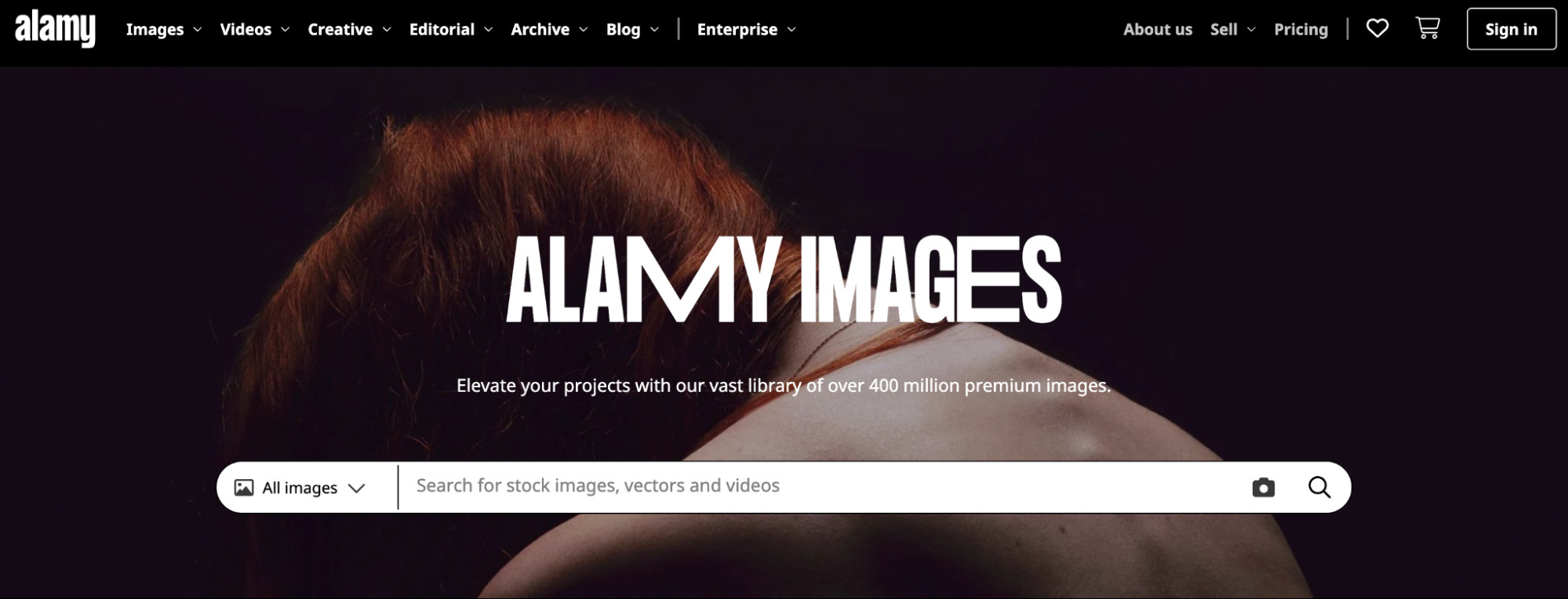 Alamy Images homepage showing a search bar for people to find royalty-free images.
Alamy Images homepage showing a search bar for people to find royalty-free images.
These platforms offer various avenues for photographers to monetize their work, whether through royalty payments, direct sales, or participation in brand missions.
2. How Can I Define My Niche in Stock Photography?
Defining your niche in stock photography involves identifying a consistent style or theme that resonates with both you and your audience. Here’s a guide on how to find your niche:
-
Consistency is key: Whether your focus is travel, fashion, nature, or food, maintaining a consistent style throughout your work is essential.
-
Explore your interests: Photographers often discover their niche by finding styles and subjects they enjoy shooting that also appeal to potential buyers.
-
Evaluate demand: Use keyword research to analyze search volume for terms related to your photographs. According to research from the Santa Fe University of Art and Design’s Photography Department, in July 2025, images related to sustainable travel are gaining significant popularity.
-
Use Google Trends: This tool can help you see which image topics are gaining popularity. Google Trends is a basic tool that can be used to see which image topics are gaining popularity.
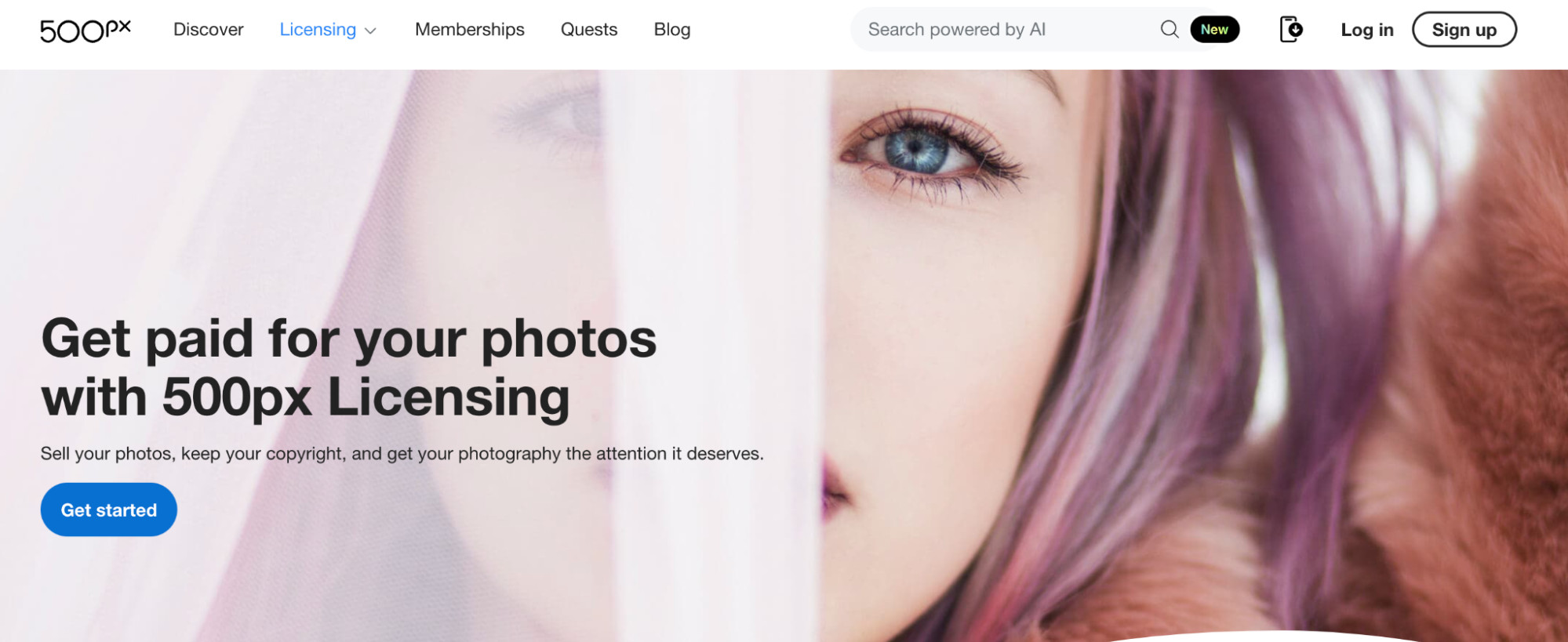 500px’s homepage that shows how contributors can get paid for their photos with licensing.
500px’s homepage that shows how contributors can get paid for their photos with licensing.
3. Why is Instagram Important for Selling Photos Online?
Instagram is an invaluable tool for photographers looking to sell images online due to its visual nature and wide reach. Here’s how to leverage Instagram effectively:
-
Reach a wide audience: Visual social platforms like Instagram can help you connect with a broad audience.
-
Use Instagram tools: Utilize Instagram tools to follow relevant accounts, engage with popular hashtags, and grow a following of potential customers.
-
Link social media accounts: Connecting your social media accounts makes it easier to manage photo-sharing across platforms and boost visibility. You can link your accounts to also post your images to Facebook simultaneously.
-
Engage with your audience: Responding to comments and messages can build relationships and create a loyal following.
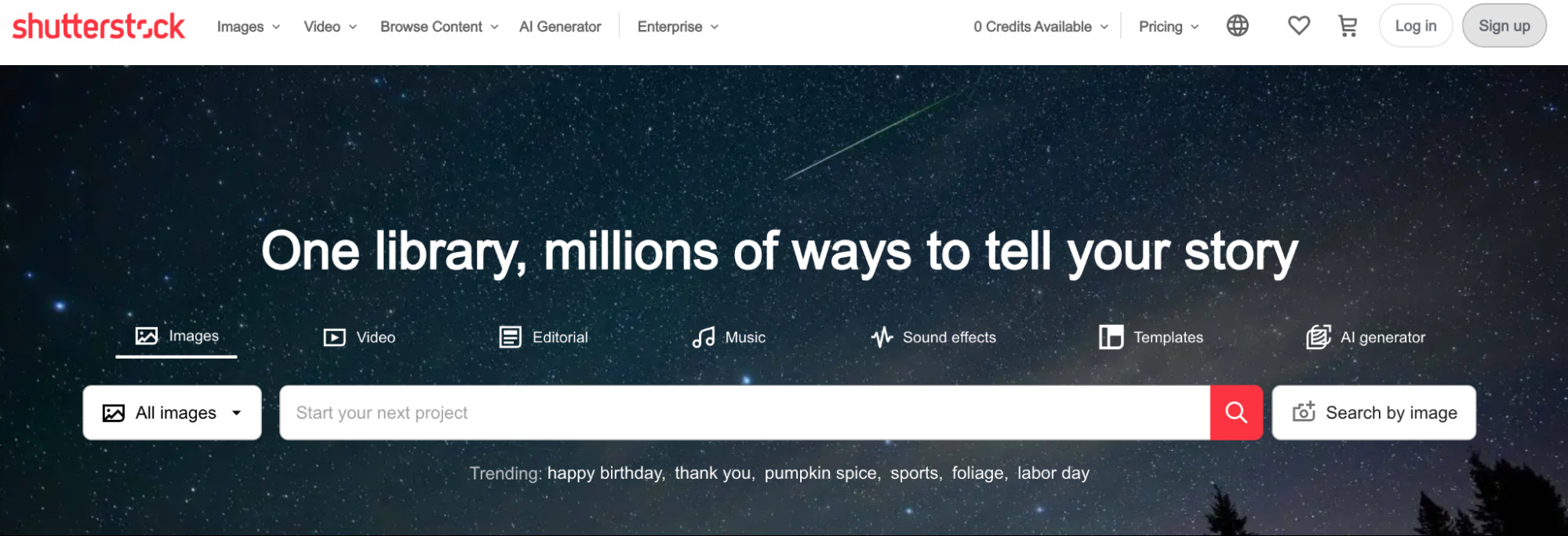 Shutterstock homepage that lets people find royalty-free images, video, and music.
Shutterstock homepage that lets people find royalty-free images, video, and music.
4. How Can I Integrate Ecommerce Into My Photography Website?
Integrating ecommerce into your website is crucial for directly selling your photos and maintaining control over your brand. Here’s how to do it:
-
Add a Buy Button: By adding a Shopify Buy Button to your site, you can make it easier for customers to purchase stock images directly from you.
-
Showcase your work: Your website should showcase your best photography and offer visitors the opportunity to purchase prints and digital downloads.
-
Use pre-designed themes: Utilize a pre-designed art and photography theme to set up your digital showroom, or combine a free theme with a gallery app.
-
Personalize your portfolio: Building a personalized portfolio page or store on platforms like Shopify can provide an excellent way to present your work and handle sales.
 Getty Images’ homepage with a search bar that helps people find photos and images.
Getty Images’ homepage with a search bar that helps people find photos and images.
5. How Do I Determine My Target Market for Stock Photos?
Understanding your target market is essential for producing photos that appeal to potential buyers. Here’s how to identify and cater to your target market:
- Identify potential buyers: Determine who is most likely to purchase your photos.
- Understand their interests: Learn what your target market is interested in and what types of photos they need.
- Specialize in a niche: For example, if you specialize in wedding photography, your target market might include wedding stationery brands or suit wholesalers.
- Cater to their needs: Sell images that your target market will buy, on the sites where they’re looking for stock images, at a price they’re willing to pay.
 Landing page for iStock that shows its generative AI-powered image creator.
Landing page for iStock that shows its generative AI-powered image creator.
6. What Are the Steps to Setting Up an Online Photography Portfolio?
Creating an online photography portfolio involves several key steps to ensure it effectively showcases your work and attracts potential clients:
- Choose the right platform: Select a platform based on your business goals and the level of control you want over your imagery. Options include stock photo sites like iStock or Alamy, platforms like Unsplash+, or ecommerce platforms like Shopify.
- Plan your portfolio’s structure: Pay attention to layout, social proof, categories, and gallery size. Your portfolio should be easy to navigate and highlight your best work.
- Optimize images for the web: Compress image sizes, use descriptive file names, and write alt text to improve user experience and SEO.
- Create an About page: Tell prospective customers about yourself and your photography journey.
- Implement ecommerce functionality: Use an ecommerce platform to handle the logistics of selling photos online.
- Ensure mobile compatibility: Make sure your portfolio looks good on mobile devices.
- Launch and promote your photos: Share your portfolio online using marketing tactics such as reposting images on social media and building an email list.
7. What Elements Should I Include in My Photography Portfolio?
Your photography portfolio should include several essential elements to attract potential clients and showcase your best work effectively. These elements help create a professional and engaging presentation:
- Layout: Ensure that your photos take center stage, but include context about each image to influence purchase decisions and improve SEO.
- Social Proof: Incorporate content that demonstrates the popularity and success of your work, such as quotes from satisfied customers or examples of how your images have been used in successful campaigns.
- Categories and Organization: Organize your images into categories to help potential customers easily browse and find what they’re looking for. For example, a nature photographer might create collections by location, environment, subject, and date.
- Gallery Size: Focus on quality over quantity. Only include high-quality images that showcase your best work to make a strong impression on clients.
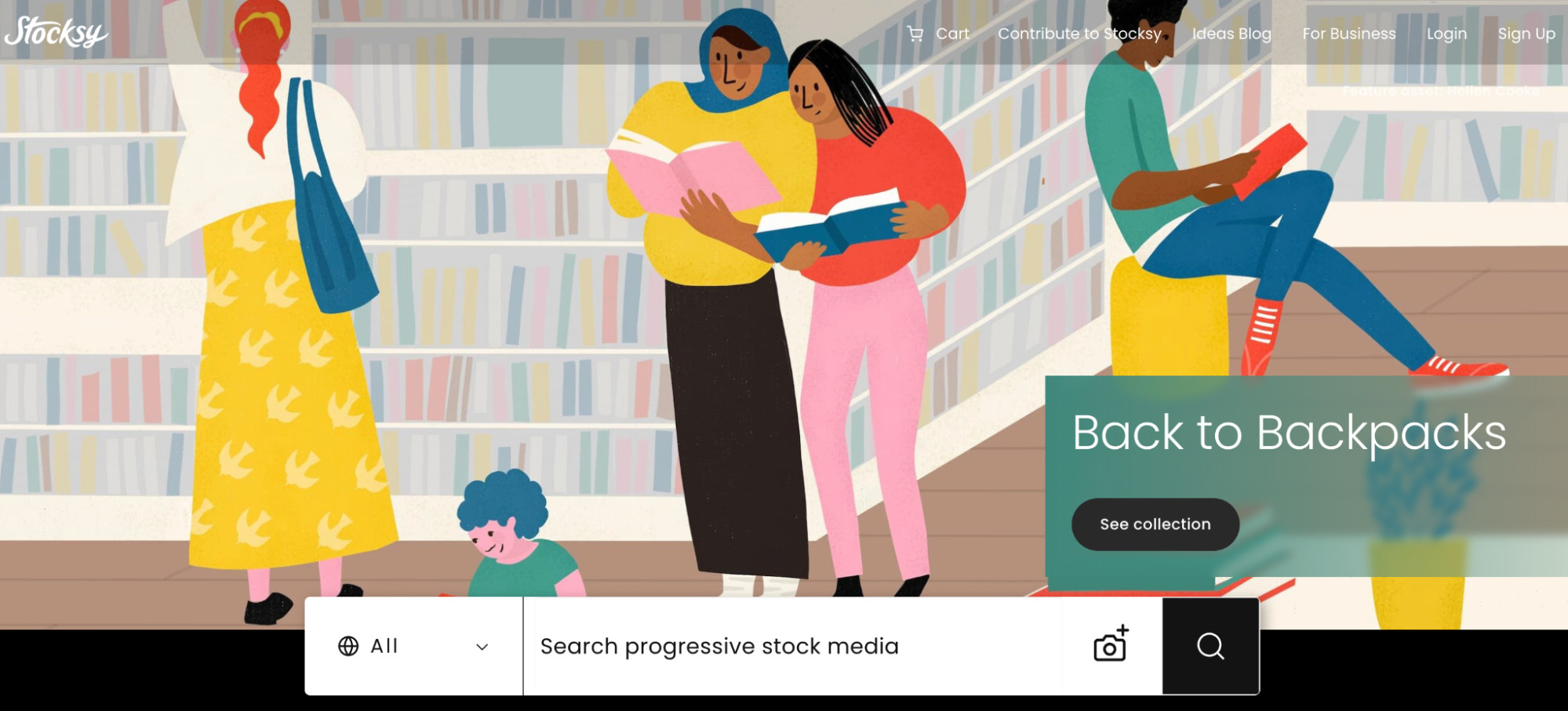 Stocksy homepage with an art graphic of people in a library.
Stocksy homepage with an art graphic of people in a library.
8. What Are the Best Practices for Optimizing Images for the Web?
Optimizing images for the web is essential for ensuring fast-loading pages and a positive user experience. Here are some best practices:
- Compress image sizes: Keep images as small as possible without compromising quality. Compress images between 60% and 80%.
- Use descriptive file names: Name your files descriptively, such as “summer-evening-nature” instead of “IMG_3542.jpg”.
- Write alt text: Add alt text to describe your photos to search engines and users with screen readers.
9. How Do I Create an Effective “About” Page for My Photography Portfolio?
Your “About” page is a crucial part of your photography portfolio, as it allows potential clients to connect with you on a personal level. Here’s how to create an effective one:
- Personal Summary: Include a brief summary of who you are and your photography journey.
- Storytelling: Share the story of how you got into photography and what inspires you.
- Personal Brand: Showcase your unique and engaging personal brand.
- Passion: Dive deep into your love of photography and what you love to shoot.
10. What Ecommerce Functionality Should I Implement on My Photography Website?
Implementing ecommerce functionality on your photography website makes it easy to sell your photos directly to customers. Here’s what to include:
-
Online Storefront: Build an online storefront for people to browse and buy your products.
-
Social Media Storefronts: Set up shop on social media platforms like Instagram Shop.
-
Payment Processing: Take payments from customers and handle taxes.
-
Shipping: Ship your products, either physically or digitally, to customers.
-
Marketing Campaigns: Manage marketing campaigns to promote your photos.
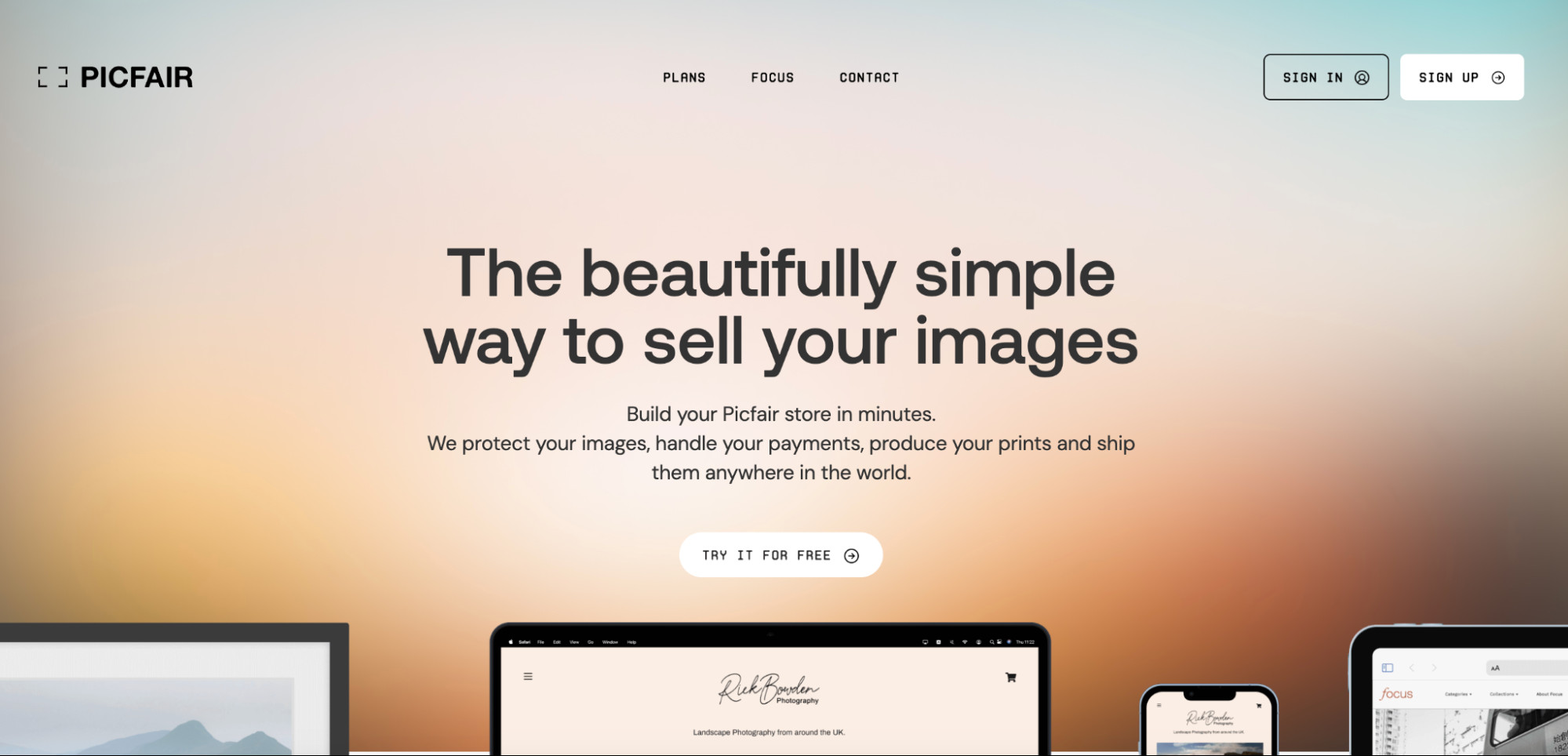 Picfair landing page for a website builder built for photographers.
Picfair landing page for a website builder built for photographers.
11. How Can I Ensure My Photography Website Is Mobile-Compatible?
Ensuring your photography website is mobile-compatible is essential, as more than half of global website traffic comes from mobile devices. Here’s how to ensure mobile compatibility:
- Responsive Website Design: Use a responsive website design that adapts to different screen sizes.
- Vertical Display: Display your photos vertically for better viewing on mobile devices.
- Large Buttons: Use large, finger-friendly buttons for easy navigation.
12. What Marketing Tactics Can I Use to Promote My Photos?
Promoting your photos effectively involves a variety of marketing tactics to reach a wider audience. Here are some strategies:
-
Social Media: Repost images on social media platforms.
-
Pinterest: Pin photos on Pinterest and link back to your portfolio site.
-
Influencer Marketing: Gift free prints to influencers.
-
Behind-the-Scenes Content: Document the behind-the-scenes of a shoot on TikTok, YouTube, or Instagram Reels.
-
Email Marketing: Build an email list by offering website visitors a discount code on their first order.
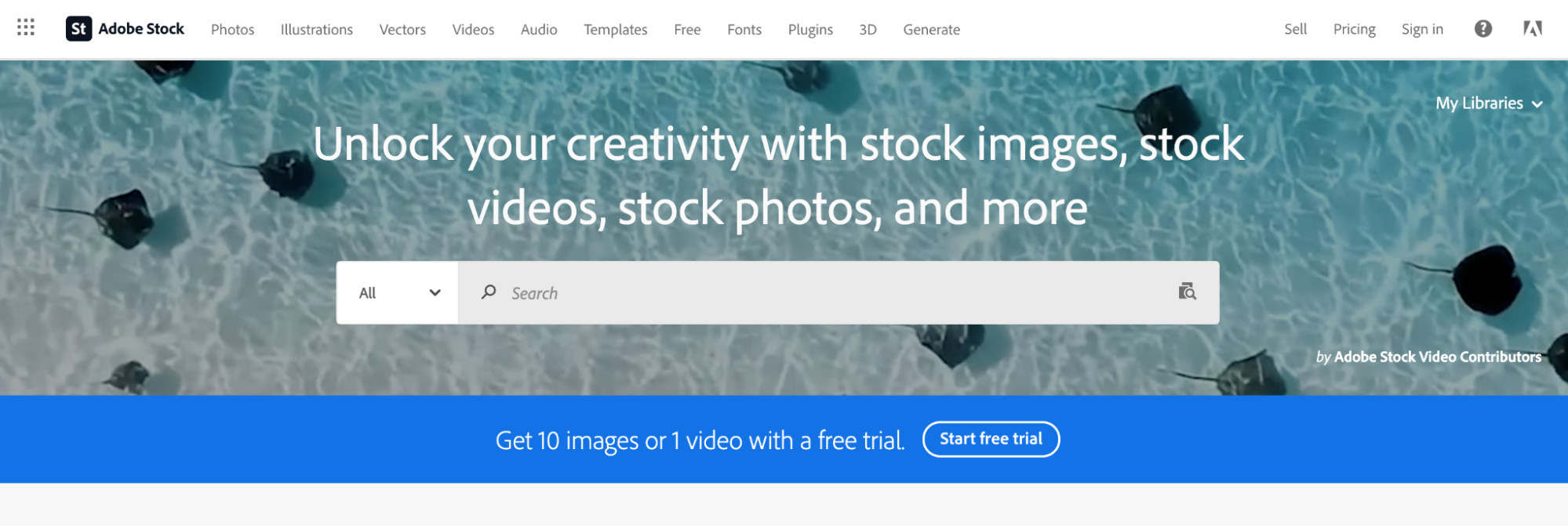 Adobe Stock homepage showing a search bar against a photo of sting rays in the ocean.
Adobe Stock homepage showing a search bar against a photo of sting rays in the ocean.
13. How Can I Sell Photos as Prints and Photo Books?
Selling photos as prints and photo books allows customers to own physical copies of your work. Here’s how to do it:
- Prints on Paper: Sell your photos as prints on paper.
- Physical Products: Offer your photography on physical products such as mugs, t-shirts, and calendars.
- Local Photo Lab: Work with a local photo lab to ship and sell prints.
- Print-on-Demand: Use a print-on-demand company to dropship a wide range of products featuring your photos.
- Photo Books: Create photo books based on a compelling theme and sell them online.
14. What Services Can I Offer as a Professional Photographer?
Professional photographers can offer a variety of services to cater to different client needs. Here are some options:
- Event Photography: Cover events such as weddings, corporate events, and parties.
- Fashion Photography: Conduct fashion shoots for magazines, brands, and designers.
- Product Photography: Photograph products for ecommerce websites and marketing materials.
15. How Can I Network to Sell My Photography Services?
Networking is essential for selling your photography services. Here are some tips:
-
Business Cards: Always have business cards handy.
-
LinkedIn Profile: Tidy up your LinkedIn profile and showcase your work.
-
Networking Events: Attend networking events where entrepreneurs and event organizers attend.
-
Personal Brand: Build a personal brand by regularly sharing your work on social media platforms.
 Landing page for stock photos on Envato Market.
Landing page for stock photos on Envato Market.
16. What Booking Platforms Can I Use to Manage My Photography Services?
Using a booking platform can help you manage your availability and book clients more efficiently. Here are some options:
- Setmore: Offers free plans and features that work well for photographers.
- SimplyBook.me: Provides scheduling solutions for photographers.
- Shopify Scheduling Apps: Add a scheduling app to book appointments directly from your site.
17. How Do I Develop a Pricing Strategy for Selling Photos Online?
Developing a pricing strategy is crucial for maximizing your earnings. Consider these factors:
-
Market Research: Research how much your target market would pay for your photos.
-
Profit Margins: Determine your profit margins by considering the costs of photography.
-
Usage Rights: Set different prices for exclusive and non-exclusive photos.
-
Discounts: Offer discounts and promotions to incentivize people to buy your photos.
-
Product Bundles: Sell collections of related images at a discounted price.
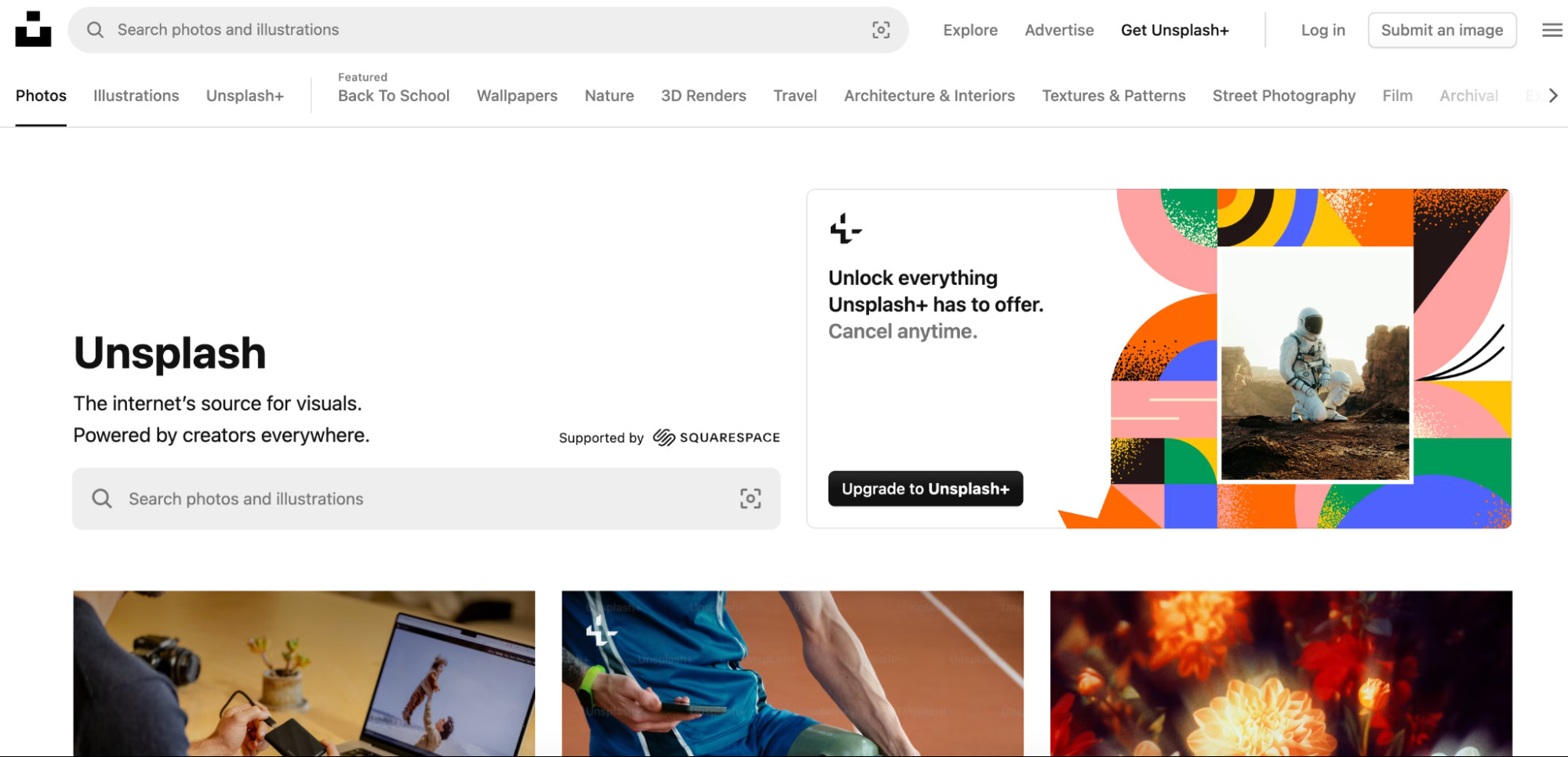 Unsplash homepage showing stock photos and a call-to-action for Unsplash
Unsplash homepage showing stock photos and a call-to-action for Unsplash
18. What Legal Considerations Should I Know When Selling Photos Online?
Understanding legal terms and concepts is essential for protecting yourself when selling photos online. Here’s a glossary of key terms:
- Editorial Use: Permission to use in blogs, newspapers, magazines, and other publications.
- Commercial Use: Permission to use in marketing and advertising to promote a product or service.
- Retail Use: Permission to use in the creation of a physical product to be sold.
- Exclusive Use: The one who purchases the license is the only one who can use the photo.
- Non-Exclusive Use: Photo licenses that can be purchased and used by anyone.
- Public Domain: Photos with no restrictions or copyright claims.
- Creative Commons: Conditional usage of your work is allowed.
- Royalty-Free: Others can buy a license and use the photo for an unlimited duration.
- Rights Managed: A one-time license can be purchased to use the photo with restrictions.
- Right of Publicity: Subjects in your photos are entitled to certain rights.
19. What Should I Do If Someone Steals My Photos Online?
If someone steals your photos, take these steps:
- Watermark Your Images: Add watermarks to your digital images before selling them online.
- Cease and Desist: Send a cease and desist request.
- Invoice: Send the culprit an invoice for using your photo.
- Credit: Always try to get others to credit you whenever they use your work.
20. How Can dfphoto.net Help Me Sell My Photos Online?
dfphoto.net offers a wealth of resources to help you succeed in selling your photos online, including:
-
Learning Resources: Access a wide range of articles, tutorials, and guides on photography techniques, business strategies, and legal considerations.
-
Community Engagement: Connect with other photographers, share your work, and get feedback to improve your skills.
-
Portfolio Showcase: Create a stunning online portfolio to showcase your best work and attract potential clients.
-
Market Insights: Stay updated on the latest trends, demands, and opportunities in the stock photography market.
-
Promotional Opportunities: Participate in contests, exhibitions, and promotional events to gain visibility and recognition.
-
Expert Advice: Receive personalized advice and guidance from industry experts to help you navigate the complexities of selling photos online.
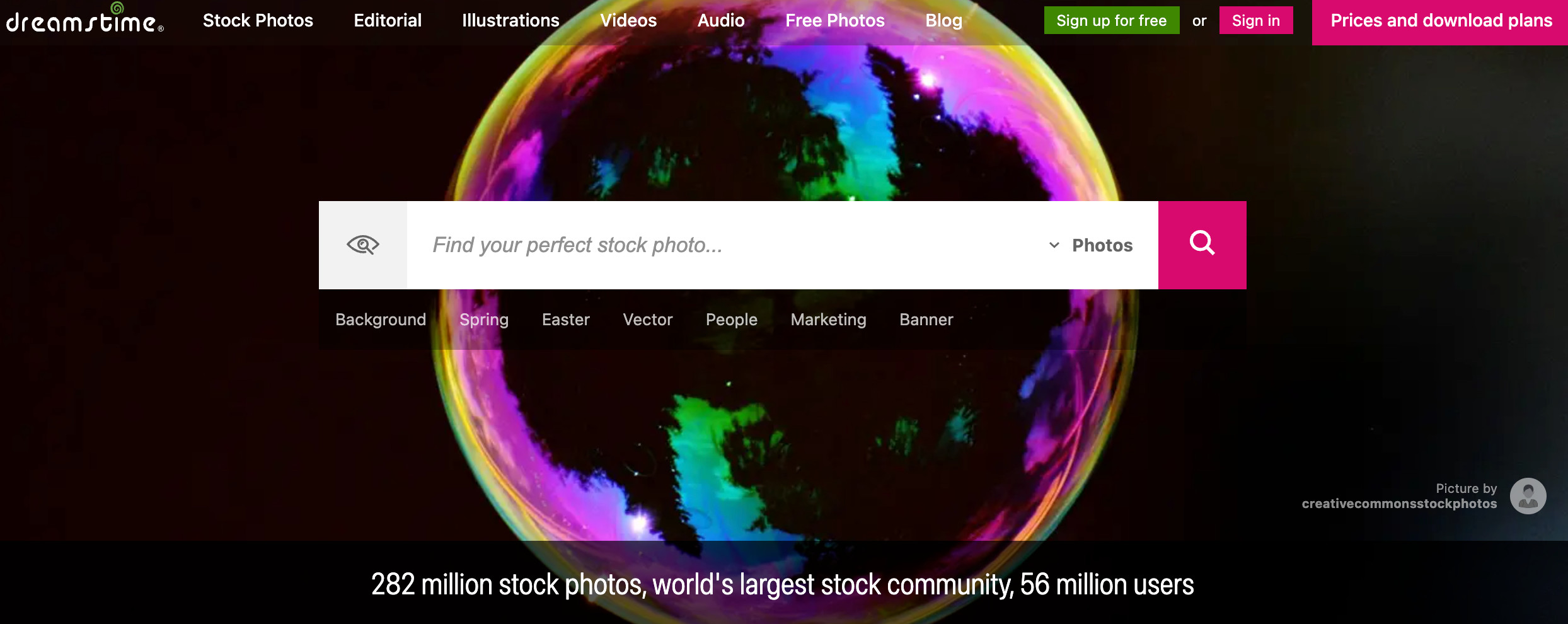 Dreamtime homepage where you can sell photos
Dreamtime homepage where you can sell photos
Ready to take your photography to the next level? Visit dfphoto.net today to explore our comprehensive resources and connect with a vibrant community of photographers.
How to Sell Photos Online FAQ
1. What Is the Best Way to Sell Photographs?
The best way to sell photographs online is by selling them as stock images for sale on third-party websites like iStock, Shutterstock, or Alamy. Selling your photos through stock sites is quick, easy, and affordable.
2. Where Can I Sell My Photos Online for Money?
You can sell your photos online for money on various platforms, including Alamy, 500px, Shutterstock, Getty Images, iStock, Stocksy, Picfair, Adobe Stock, Envato Elements, and Unsplash.
3. How Do You Make Money from Stock Photography?
You make money from stock photography by uploading your images to a stock photography website, which then licenses the images to clients. You, as the photographer, receive a royalty payment for each licensed image.
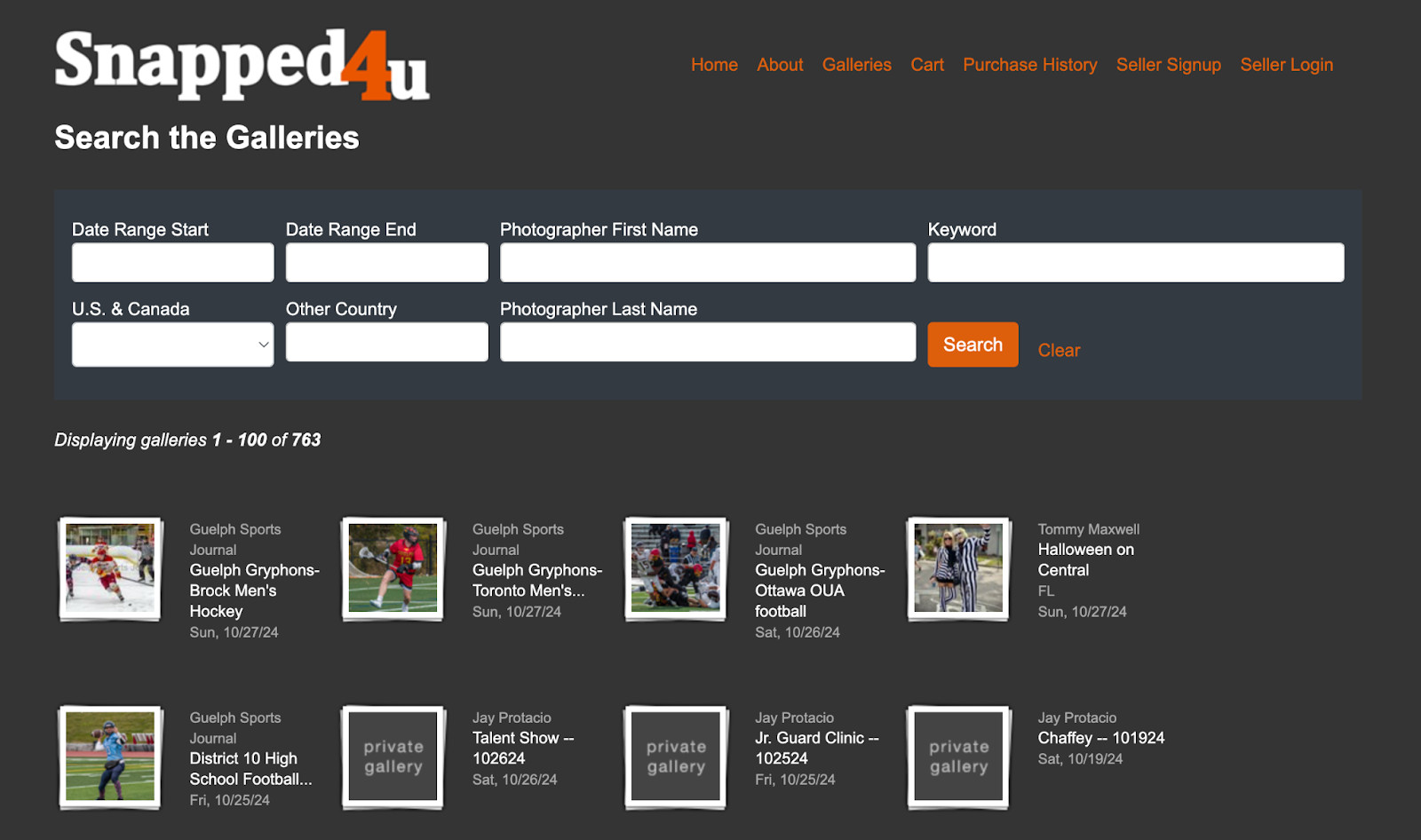 Snapped4U homepage showing photos from sports photographers
Snapped4U homepage showing photos from sports photographers
4. What is the difference between Rights Managed and Royalty-Free licenses?
Rights Managed (RM) licenses are one-time licenses that allow the buyer to use the image with specific restrictions, such as distribution or duration. Royalty-Free (RF) licenses allow the buyer to use the image an unlimited number of times without additional fees.
5. How do I protect my photos from being used without my permission?
To protect your photos, you can add watermarks, monitor online usage, and register your copyrights.
6. What are the key elements of a successful stock photo?
Key elements include high image quality, clear subject, good lighting, and relevance to current trends.
7. What equipment do I need to start selling stock photos?
You generally need a good quality camera, lenses, editing software, and a reliable computer.
8. Can I sell photos taken with my smartphone?
Yes, many stock photography websites accept photos taken with smartphones as long as the image quality is high.
9. Do I need model releases for photos with people in them?
Yes, you typically need model releases for photos featuring recognizable people if you plan to sell them for commercial use.
10. What is the difference between editorial and commercial use of a photo?
Editorial use is for informational purposes (e.g., news, articles), while commercial use is for advertising and promotion.
Address: 1600 St Michael’s Dr, Santa Fe, NM 87505, United States
Phone: +1 (505) 471-6001
Website: dfphoto.net
Explore dfphoto.net for detailed tutorials, stunning photography, and a thriving community. Elevate your skills, find inspiration, and connect with fellow photography enthusiasts today.
 Foap creator landing page advertises a mobile app for photographers
Foap creator landing page advertises a mobile app for photographers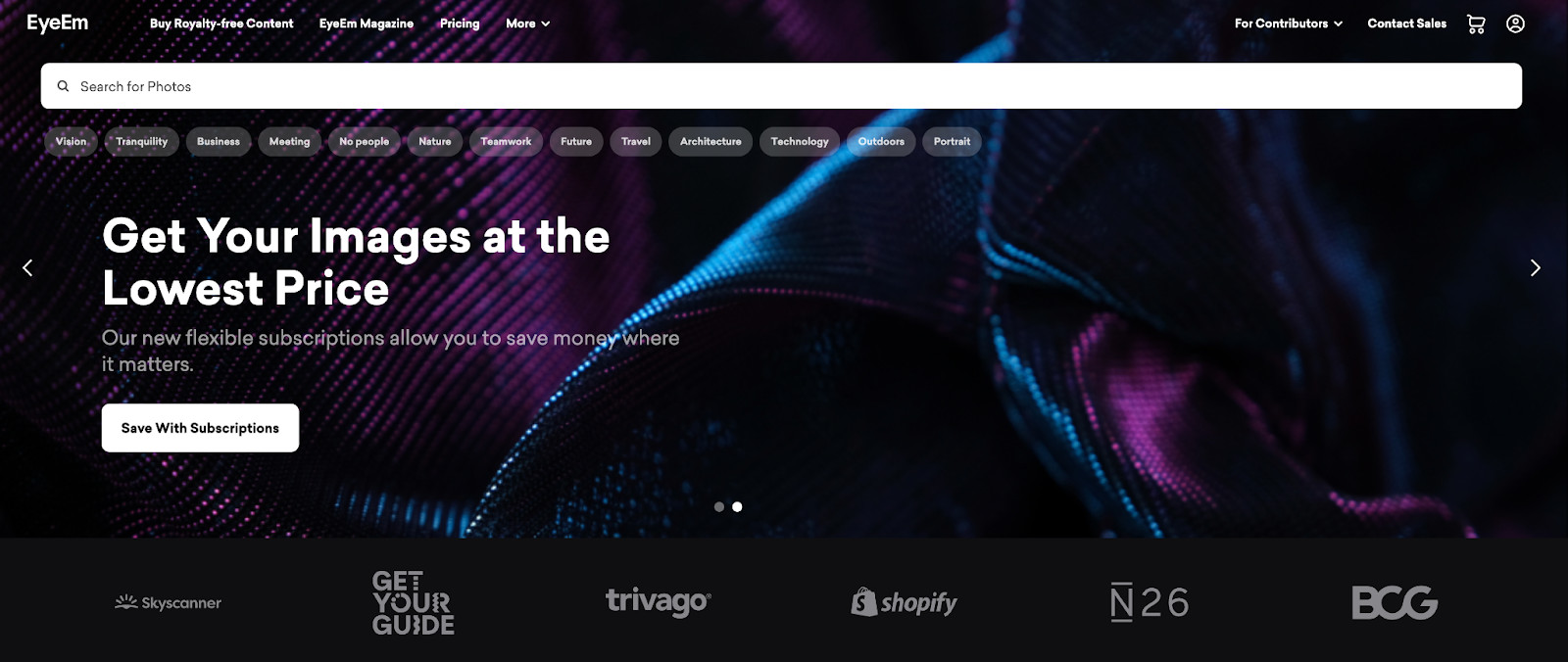 EyeEm homepage with a search bar and examples of high-profile clients
EyeEm homepage with a search bar and examples of high-profile clients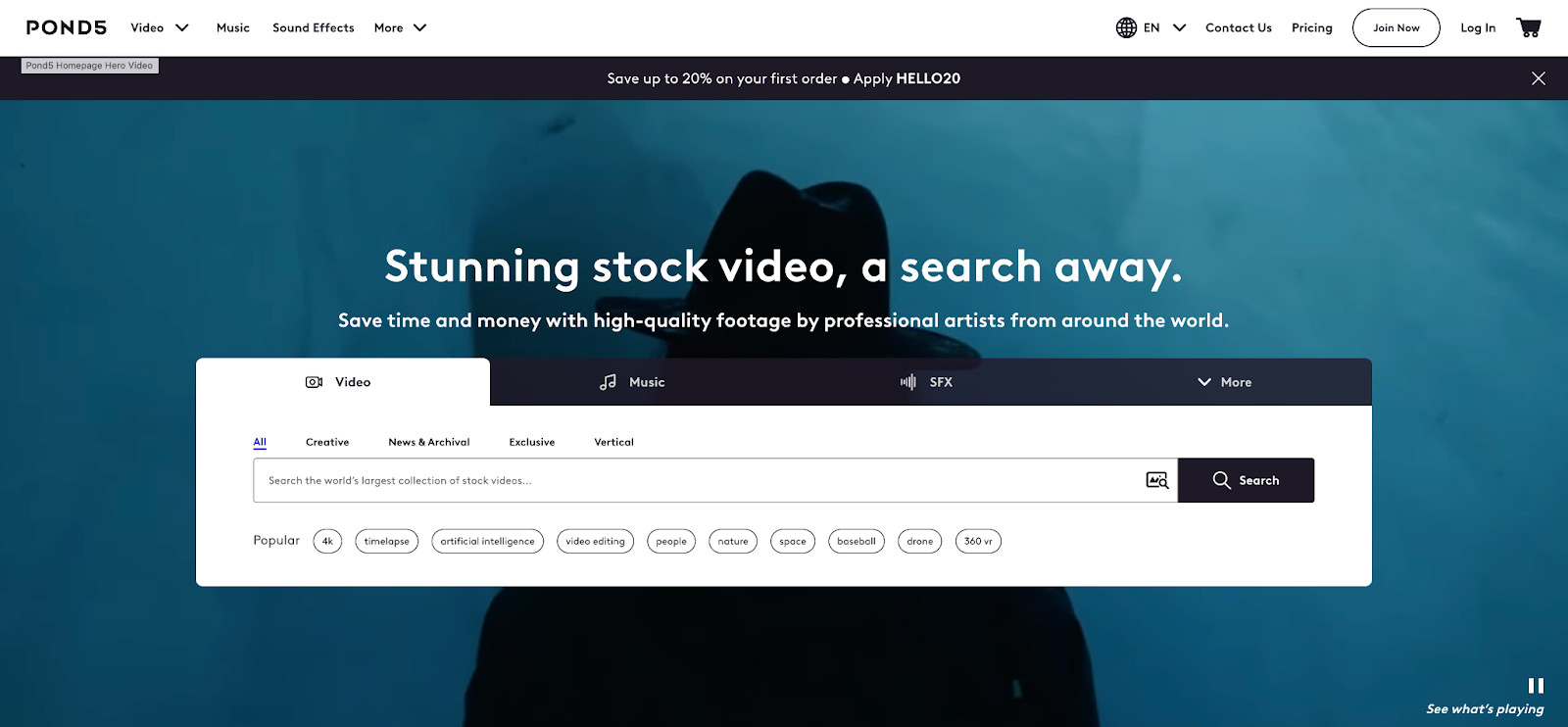 Pond5
Pond5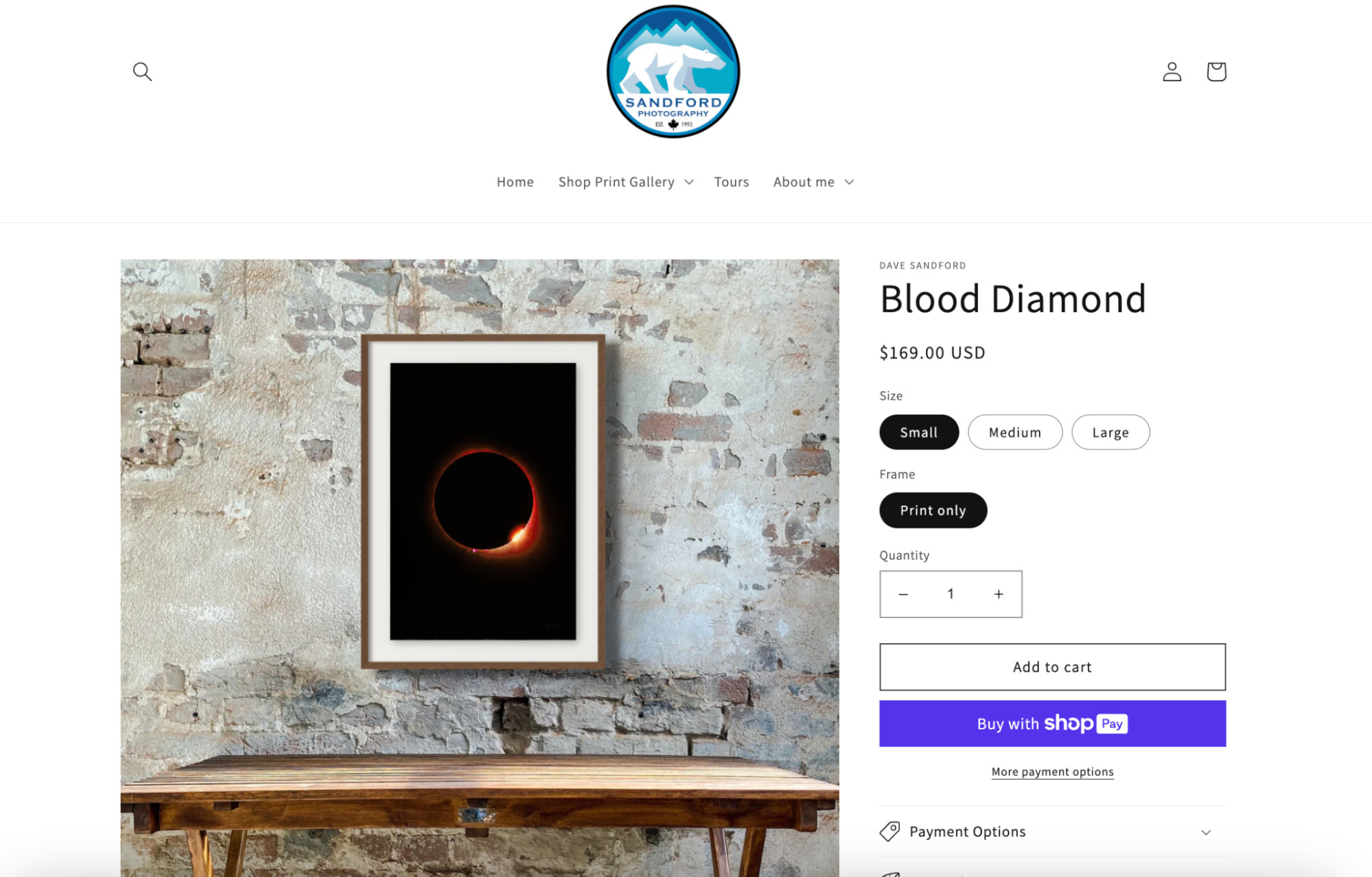 Product page for a print of a moon with a red border against a black background.
Product page for a print of a moon with a red border against a black background.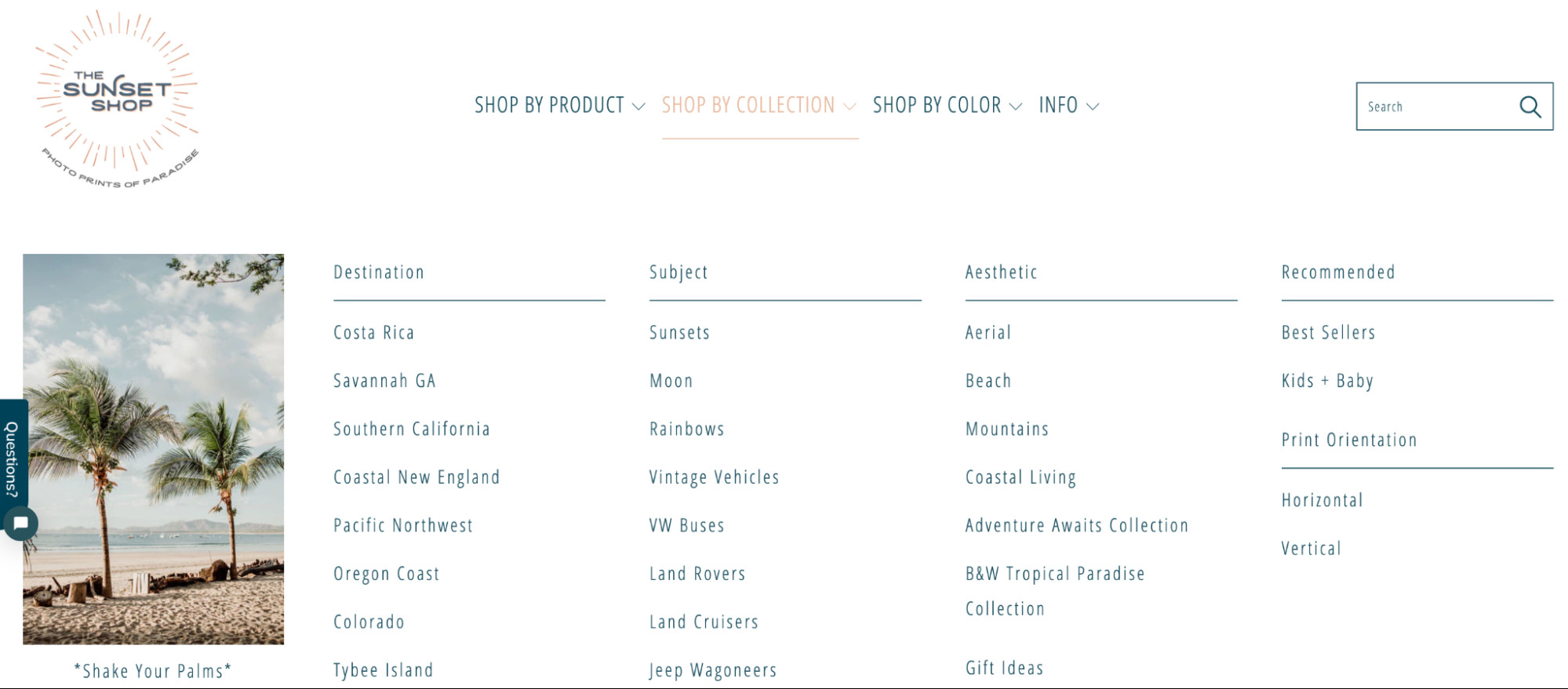 Example product categories on a photo print website include “Costa Rica”, “Sunset”, and “Mountains”.
Example product categories on a photo print website include “Costa Rica”, “Sunset”, and “Mountains”.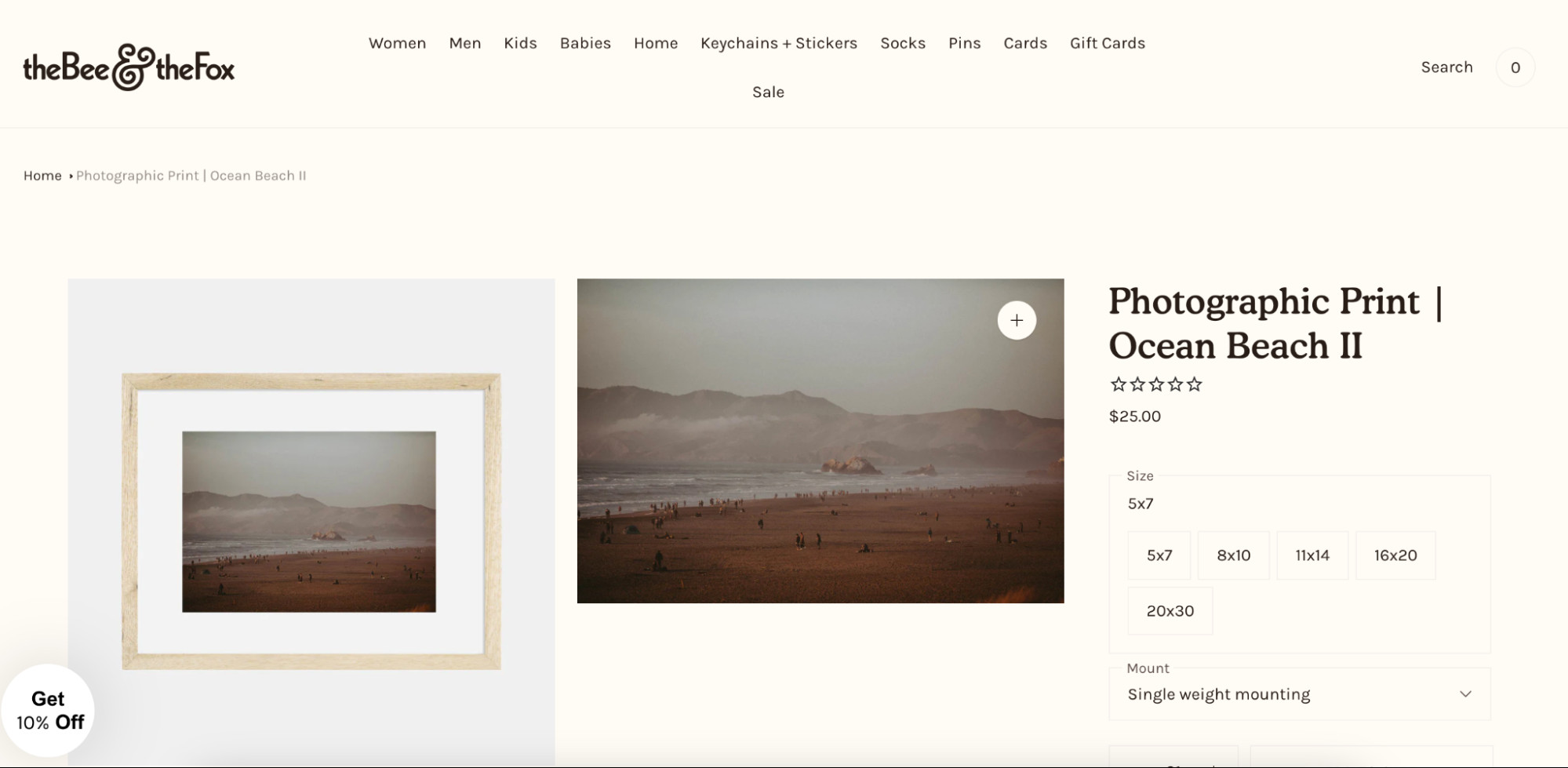 Product page for a 5×7 printed photo of a beach.
Product page for a 5×7 printed photo of a beach.
